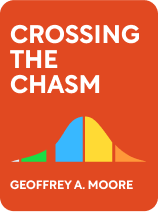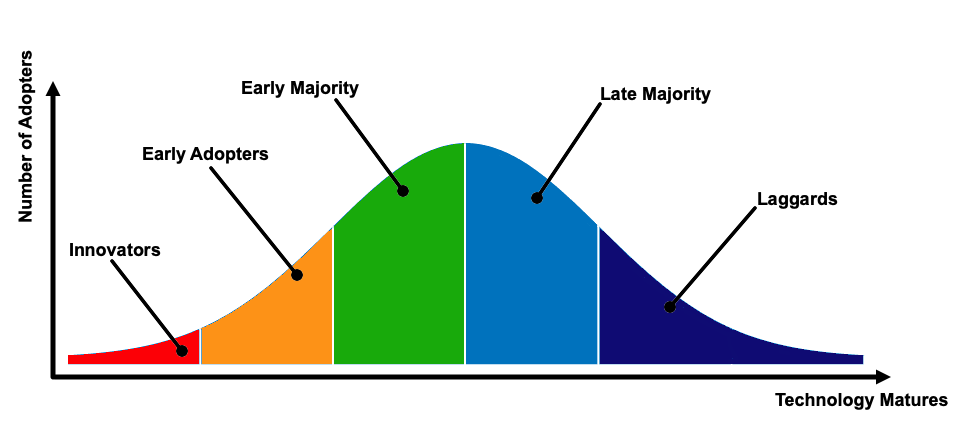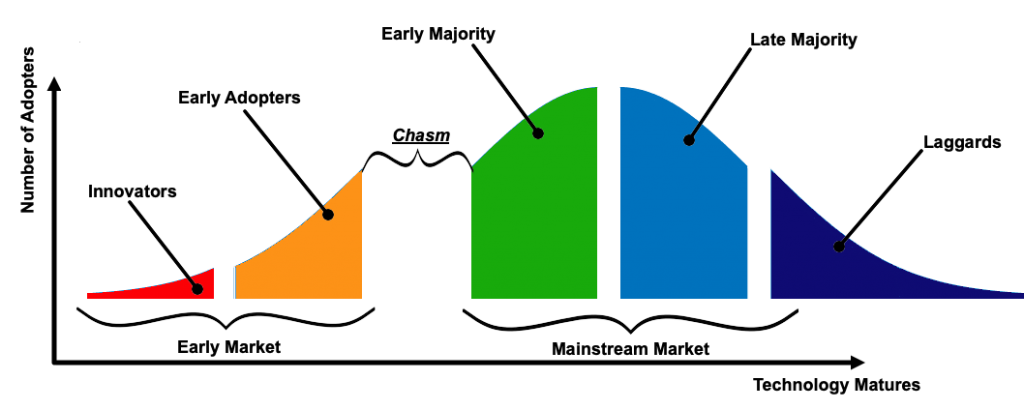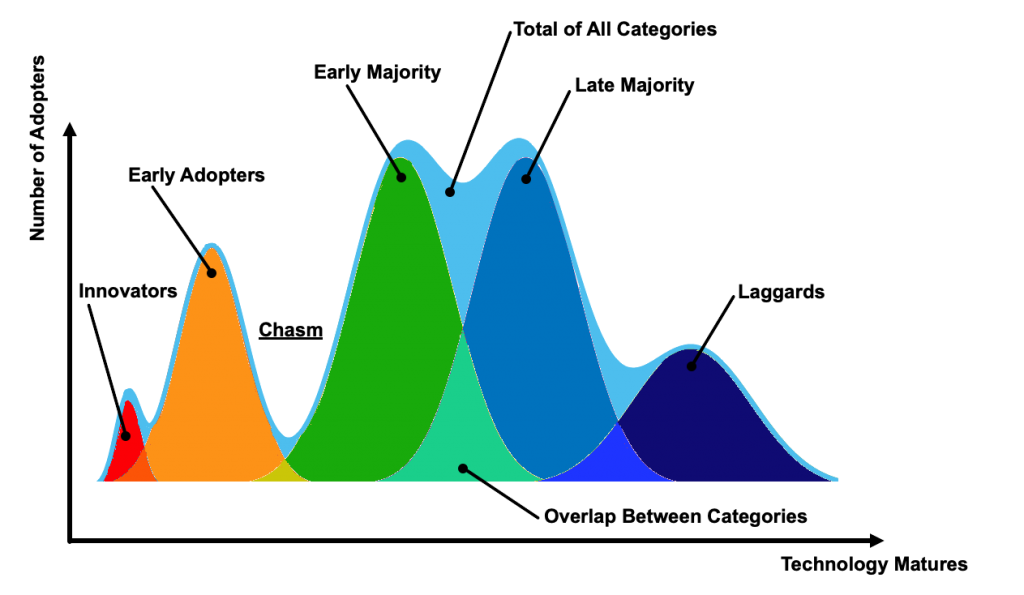

This article is an excerpt from the Shortform book guide to "Crossing the Chasm" by Geoffrey Moore. Shortform has the world's best summaries and analyses of books you should be reading.
Like this article? Sign up for a free trial here .
What is the Technology Adoption Life Cycle? What is the “chasm” in the context of the Technology Adoption Life Cycle model?
The Technology Adoption Lifecycle is a theoretical model that aims to describe customer behavior in relation to the adoption or acceptance of a new product or technological innovation. According to Geoffrey Moore, the author of Crossing the Chasm, the Technology Adoption Life Cycle model doesn’t account for gaps that create the “chasm” between the early market and the mainstream market.
In this article, we’ll discuss the flaw in the TALC model (according to Moore) and his revised explanation of the TALC framework.
The Problem With the Traditional TALC
The traditional TALC predicts that as a technology matures, the number of potential new buyers first increases (as the technology starts to catch on) and then decreases (as you run out of potential customers who haven’t already bought it), following the profile of a bell curve. The area under the curve represents the total number of customers for the new technology. This area is divided into five categories of prospective customers (innovators, early adopters, early majority, late majority, laggards), as shown in the figure below.

Revised Technology Adoption Life Cycle
The traditional Technology Adoption Life Cycle assumes that sales to the five psychographic categories of customers transition seamlessly from one to the other as the technology matures. Sales in earlier categories build momentum, prompting adoption in the next category.
However, as Moore explains in Crossing the Chasm, the Technology Adoption Life Cycle doesn’t reflect what actually happens in the markets. He argues that the psychographic differences between the people in each stage of adoption create gaps between each category. Thus, Moore proposes a “Revised TALC,” which recognizes those gaps, as shown below. Because of the gaps, sales momentum in one category doesn’t necessarily carry over to the next.

Distinct Gaps Versus Overlapping Populations
In Moore’s revised TALC, the categories are shown as separate blocks of a segmented bell curve. However, given that Moore acknowledges you may sometimes be making sales to more than one category at once, a more accurate graphical representation of Moore’s model might represent the categories as individual, overlapping bell curves, as shown below.


———End of Preview———
Like what you just read? Read the rest of the world's best book summary and analysis of Geoffrey Moore's "Crossing the Chasm" at Shortform .
Here's what you'll find in our full Crossing the Chasm summary :
- An explanation of the chasm phenomenon that many new high-tech products face
- How to pilot a product across this chasm to mainstream success
- The problems with the Technology Adoption Life Cycle (TALC) model






